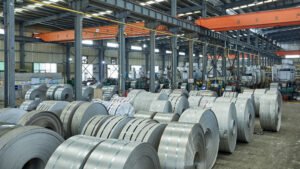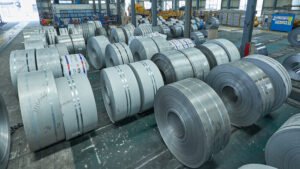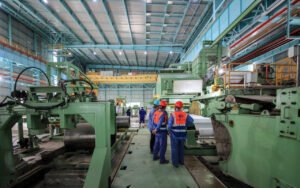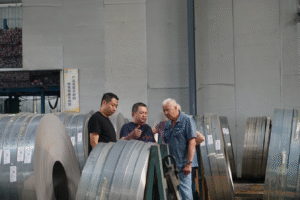Stainless Steel Sheet and Coil: The Ultimate Guide for Industrial Applications
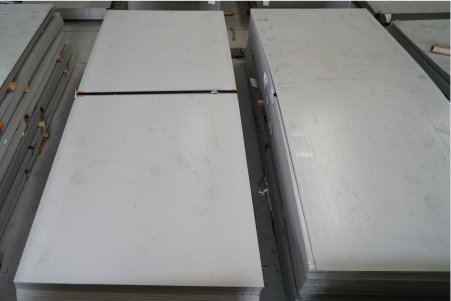
Struggling to find a material that offers both durability and versatility for your projects? The wrong choice can lead to corrosion, costly maintenance, and a compromised final product, impacting your reputation and bottom line. Stainless steel sheets and coils provide a superior solution, combining strength, corrosion resistance, and aesthetic appeal to meet diverse industrial demands.
Stainless steel sheets and coils are flat-rolled steel products known for their exceptional corrosion resistance, high tensile strength, durability, and hygienic properties. Available in various grades and finishes, they are fundamental materials in construction, manufacturing, and automotive industries due to their versatility and long-term performance.
As a key player in the global stainless steel supply chain, I've seen firsthand how these materials can transform a project from a mere concept into a lasting legacy. But what truly sets them apart? Let’s delve into the specific characteristics that make stainless steel an indispensable asset and explore how you can leverage its full potential in your own applications.
While we often praise stainless steel for its obvious strengths, it's crucial to look beyond the surface. The decision isn't just about choosing "stainless steel"; it's about selecting the right grade for a specific environment. For instance, a 304 grade is excellent for food processing equipment, but in a marine environment1, the chloride exposure would demand a 316 grade with molybdenum for superior corrosion resistance. Data from the Nickel Institute shows that incorrect grade selection is a leading cause of premature failure. This nuanced understanding separates successful projects from costly mistakes, highlighting the need for a deeper, more critical evaluation of material specifications against application demands.
What are the key characteristics of stainless steel sheets and coils?
Are you uncertain about what makes stainless steel the right choice over other metals? This uncertainty can lead to over-engineering with expensive alloys or under-engineering, resulting in premature failures and unexpected replacement costs. Understanding the core characteristics—corrosion resistance, strength, hygiene, and aesthetics—empowers you to make informed, cost-effective material selections.
The key characteristics of stainless steel sheets and coils are their remarkable corrosion resistance due to chromium content, high strength-to-weight ratio, and excellent formability. They are also known for their hygienic, non-porous surface, aesthetic versatility through various finishes, and recyclability, making them a sustainable choice.
From my experience at MFY, I’ve seen countless clients initially drawn to stainless steel for one primary reason, usually its signature resistance to rust. However, they soon discover a rich tapestry of properties that make it a uniquely versatile material. It's a bit like buying a high-performance car for its speed, only to fall in love with its handling, comfort, and fuel efficiency. The true value of stainless steel isn't just in one standout feature, but in the synergistic interplay of all its characteristics. A construction contractor in Southeast Asia might select our coils for their durability in a humid climate, while a medical equipment manufacturer in the Middle East prioritizes their hygienic properties. Both are leveraging the material's strengths, but for vastly different reasons. This multi-faceted nature is what we'll explore next. We will dissect not just what these properties are, but how they translate into tangible benefits and competitive advantages across different operational contexts, helping you appreciate the full spectrum of possibilities that stainless steel unlocks. Let's move beyond the surface-level benefits and get into the technical and practical details.
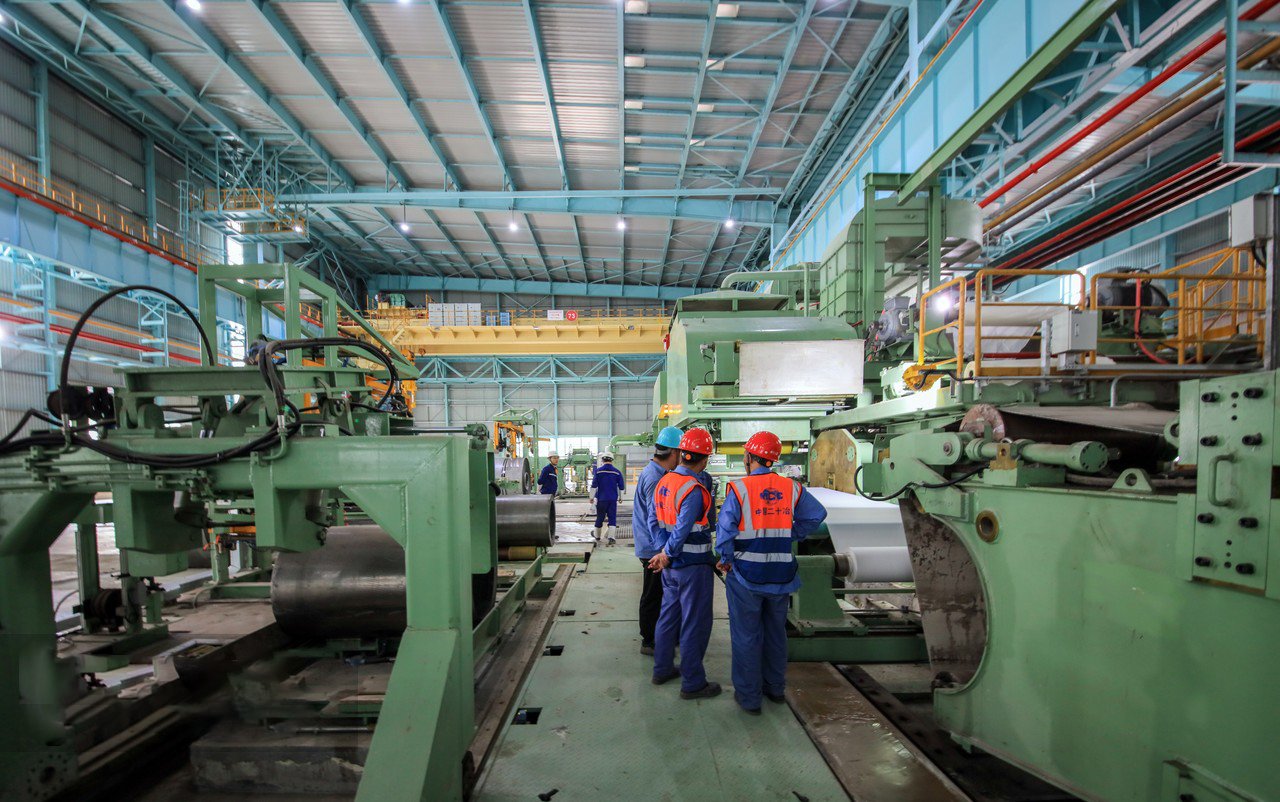
The Science Behind Unmatched Corrosion Resistance
The defining feature of stainless steel is its ability to resist corrosion, a property derived from its chromium content. When the chromium in the steel is exposed to oxygen, it forms a thin, stable, and invisible passive layer of chromium oxide on the surface. This layer is "passive" because it doesn't react with the surrounding environment, and it's self-healing; if scratched or damaged, it instantly reforms in the presence of oxygen, providing continuous protection against rust and staining. To be classified as stainless steel, the alloy must contain a minimum of 10.5% chromium by mass, though many common grades contain significantly more to enhance this protective effect.
The level of corrosion resistance varies greatly between different grades, making grade selection a critical decision. For example, a client of ours in a coastal region of India initially specified grade 304 for outdoor architectural panels. Within two years, they observed significant pitting due to the high chloride concentration in the sea air. We consulted with them and recommended a switch to grade 316L, which contains molybdenum. This addition significantly enhances resistance to chloride corrosion. By supplying our 316L sheets, we provided a long-term solution that, while slightly more expensive upfront, eliminated the risk of premature failure and the far greater expense of future replacement and reputational damage.
This isn't just an anecdotal observation; it's a financial imperative. A comprehensive study by NACE International2 estimated the global annual cost of corrosion to be a staggering $2.5 trillion. A significant portion of this cost, particularly in sectors like infrastructure, public utilities, and manufacturing, can be directly mitigated by the correct specification of corrosion-resistant alloys like stainless steel. Choosing the right grade is not just an engineering decision—it's a powerful economic strategy that protects assets and ensures long-term operational viability.
Balancing Strength, Formability, and Durability
Beyond its anti-corrosion properties, stainless steel offers an impressive profile of mechanical properties, including high tensile strength, ductility, and durability. Austenitic grades, such as the widely used 304 and 316, are particularly noteworthy for their exceptional formability and toughness. They can be bent, stamped, and drawn into complex shapes without fracturing, which is a massive advantage for manufacturers. This combination of strength and workability allows for the creation of components that are both lightweight and incredibly robust, a combination that many other materials struggle to achieve.
This balance is a key driver of innovation in the automotive sector. An automotive parts manufacturer we partner with in Southeast Asia uses our ferritic grade 409L stainless steel coils for exhaust systems. They require a material that can withstand high temperatures and corrosive exhaust gases while also being easily formed into the intricate shapes of modern exhaust components. Our 409L coils meet these requirements perfectly. This allows them to produce durable, high-performance exhaust systems that contribute to reducing overall vehicle weight, which in turn improves fuel efficiency and lowers emissions—a critical goal for the industry.
When comparing material options, it’s essential to look at the entire lifecycle. While conventional carbon steel may offer higher initial strength at a lower purchase price, it lacks the inherent durability and corrosion resistance of its stainless counterpart. Over the lifespan of a product—be it a bridge, a vehicle, or a piece of machinery—carbon steel will often incur significant costs related to maintenance, protective coatings, and eventual replacement. Stainless steel's upfront cost should be viewed as an investment in longevity and reliability. In a total cost of ownership analysis, stainless steel frequently emerges as the more economical choice, delivering sustained performance with minimal intervention.
Aesthetics and Hygiene: The Functional Finish
The versatility of stainless steel extends to its surface finish, which is a critical characteristic for both aesthetic and functional reasons. The finish is not merely a cosmetic feature; it has a direct impact on cleanability, reflectivity, and even corrosion resistance. Finishes range from the dull, matte 2B finish3—the standard for many industrial applications—to the highly polished and reflective No. 8 mirror finish used for decorative and architectural purposes. Each finish is achieved through specific processing steps, such as rolling, annealing, and polishing, to meet precise application requirements.
The importance of the correct finish is paramount in industries with stringent hygiene standards, such as food processing and medical device manufacturing. A key client of ours in Russia, an operator of a large-scale dairy processing facility, relies on our 304 stainless steel sheets with a 2B finish. The smooth, non-porous surface of this finish is crucial for preventing the adhesion and growth of bacteria. It allows for easy and effective cleaning and sanitization, ensuring they meet rigorous international food safety standards like those set by NSF International. A rougher, more textured surface could harbor microorganisms, creating a contamination risk that is simply unacceptable in their industry.
The choice of finish directly correlates with performance in specific environments. Understanding these differences allows businesses to optimize their applications for both performance and cost. The table below outlines some common finishes and their typical uses.
| Finish | Description | Key Characteristics | Typical Applications |
|---|---|---|---|
| 2B | Smooth, moderately reflective cold-rolled finish | General purpose, good corrosion resistance, smooth surface for hygiene | Food processing equipment, chemical tanks, industrial machinery |
| No. 4 | Brushed finish with a directional grain | Good aesthetic appeal, effectively hides minor scratches and fingerprints | Kitchen appliances, sinks, architectural panels, elevator doors |
| No. 8 | Highly reflective mirror finish, non-directional | Highest aesthetic quality, extremely smooth and cleanable | Decorative trim, column covers, reflective surfaces, high-end architecture |
Chromium prevents corrosionTrue
Stainless steel's corrosion resistance comes from chromium forming a protective oxide layer when exposed to oxygen.
All grades resist saltwaterFalse
Only specific grades like 316L with molybdenum offer proper resistance to chloride-rich marine environments.
How do stainless steel sheets and coils impact various industries?
Are you feeling pressure to innovate, enhance product longevity, and meet stricter regulatory standards in your industry? Using suboptimal materials can lead to product failures, tarnish your brand's reputation, and leave you trailing behind competitors who have embraced superior, more resilient solutions. Discover how stainless steel sheets and coils are not just materials, but catalysts for advancement in construction, automotive, and manufacturing.
Stainless steel sheets and coils critically impact industries by providing unparalleled durability for construction projects, ensuring hygiene and corrosion resistance in food and medical sectors, and enabling lightweight, resilient components in automotive manufacturing. Their versatility makes them a cornerstone material for industrial innovation and reliability.
I've had the privilege of seeing our stainless steel products ship from MFY's facilities to destinations across the globe—from the bustling construction sites of the Middle East to the high-tech manufacturing floors of Southeast Asia. Each shipment represents more than just a transaction; it's a testament to the material's transformative power. It’s one thing to read about the properties of stainless steel in a datasheet, but it's another entirely to witness its real-world impact. For instance, I recall a project with an engineering contractor in India who was building a large-scale water treatment facility. They chose our 316L coils4 not just for their technical specifications but for the long-term public health security they would provide. This material wasn't just a line item on a budget; it was the backbone of a critical infrastructure project. This direct link between material choice and societal benefit is what makes my work so rewarding. In the sections that follow, we'll journey through these diverse applications, exploring specific case studies and data that illustrate how stainless steel is not merely a component, but a driver of progress and a foundation for a more resilient future.
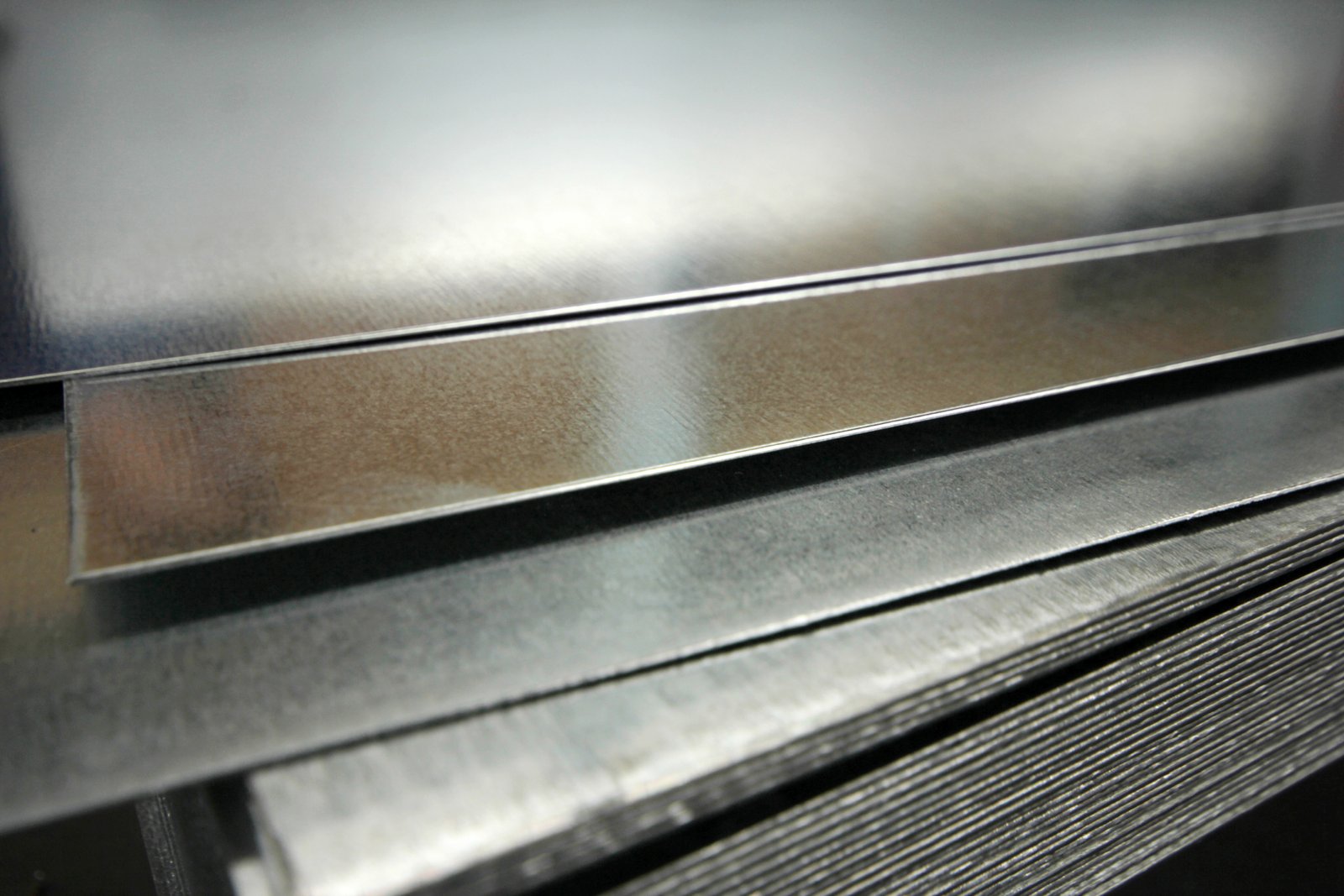
Revolutionizing Architecture and Construction
In the world of architecture and construction, stainless steel is synonymous with both timeless design and enduring strength. Iconic structures like the Chrysler Building in New York5 and the Burj Khalifa in Dubai utilize stainless steel for their cladding, leveraging its ability to resist urban pollution and harsh weather while retaining its aesthetic brilliance for decades. This low-maintenance longevity is a powerful value proposition for developers and asset owners. The material’s inherent strength also allows architects to design with greater freedom, creating sweeping curves and long spans that would be challenging with heavier, less durable materials. It is the material of choice for projects that aim to make a lasting statement.
This is a reality I see play out in our work at MFY. A major engineering and construction contractor approached us for a landmark airport terminal project in the Middle East. The environmental challenges were immense: extreme desert heat, frequent sandstorms, and a saline coastal atmosphere. They needed a material for the massive roof and façade that could withstand this punishing combination. We collaborated with their engineering team and supplied duplex grade 2205 stainless steel sheets. This grade offers a superior combination of high strength and exceptional resistance to chloride-induced stress corrosion cracking. This strategic choice guaranteed the terminal's structural integrity and visual appeal for decades, delivering a massive reduction in projected lifecycle maintenance costs and ensuring the project would remain an icon.
The advantages are backed by clear data. According to the World Steel Association, the high strength-to-weight ratio of steel, including stainless grades, is a key enabler of modern, resource-efficient architectural design. While the initial procurement cost of stainless steel may be higher than alternatives like pre-painted galvanized steel or aluminum, its lifecycle cost is often significantly lower. When you factor in the reduced need for cleaning, repairs, and eventual replacement over a 50 to 100-year lifespan, stainless steel proves to be a wise and sustainable economic investment for long-term infrastructure assets.
Advancing the Automotive and Transportation Sector
The automotive industry is in the midst of a profound transformation, driven by the urgent need for vehicles that are safer, more fuel-efficient, and more sustainable. Stainless steel is playing a pivotal, if often unseen, role in this evolution. While its use in high-temperature exhaust systems is well-established, its application is rapidly expanding into critical structural and safety components. The development of Advanced High-Strength Steel (AHSS)6 allows for the manufacturing of parts that are stronger and absorb more crash energy without adding prohibitive weight. This is a game-changer for vehicle design.
Safety and sustainability are now intertwined goals for automakers, and stainless steel helps achieve both. Automakers are increasingly using high-strength stainless steel in core structural elements like A-pillars, B-pillars, and door beams to enhance passenger protection in the event of a collision. Recently, a long-term automotive components client of ours in Asia began using our custom-sized 400-series ferritic stainless steel blanks for their next-generation exhaust systems. By working closely with their design team, we were able to provide material with an optimized gauge and chemical composition, which enabled them to reduce raw material usage by 15% per unit while still exceeding stricter new emissions and durability standards.
While aluminum is often cited as the primary material for lightweighting, stainless steel offers distinct advantages in specific applications, such as superior fatigue resistance and much better performance at elevated temperatures. Furthermore, stainless steel's impressive sustainability credentials are a major draw. With a recovery and recycling rate of nearly 85%, it is a cornerstone of the circular economy. As consumers and regulators demand greater environmental responsibility from manufacturers, the high recyclability and long service life of stainless steel make it an increasingly strategic choice for the future of transportation.
Ensuring Safety and Hygiene in Food and Medical Fields
In industries where hygiene is not just a standard but a matter of public health, stainless steel is the undisputed material of choice. Its non-porous, corrosion-resistant surface is chemically inert, meaning it will not react with food acids or cleaning agents, nor will it harbor bacteria or other pathogens. This makes it the gold standard for applications ranging from food and beverage production to pharmaceutical manufacturing and surgical instruments. The cleanability of stainless steel is essential for preventing cross-contamination and ensuring product safety.
At MFY, we work closely with numerous companies in these critical sectors. A representative case is a large equipment integrator we supply in Southeast Asia, who manufactures and installs full production lines for dairy and beverage plants. They exclusively use our 304 and 316L grade stainless steel sheets for everything from large storage silos and mixing tanks to intricate piping systems and pasteurizers. These components must endure daily Cleaning-In-Place (CIP) procedures, which involve flushing the systems with aggressive chemical sterilizers at high temperatures. Our ability to deliver certified, high-quality material with a consistently smooth and crevice-free finish is mission-critical for them. It enables them to build equipment that their end-users can trust to maintain the highest levels of sanitation.
The scientific evidence supporting this choice is overwhelming. Studies published in leading peer-reviewed journals like the Journal of Food Protection have consistently shown the superior cleanability of stainless steel compared to alternative materials like plastics or aluminum in food-contact scenarios. Furthermore, research highlights the critical role of the surface finish; a smooth finish like a 2B or better can reduce bacterial adhesion by over 90% compared to a rougher surface. This data powerfully illustrates that material and finish specification in these industries is not a simple manufacturing preference but a fundamental pillar of public health and safety.
Stainless steel resists corrosion in harsh environmentsTrue
Grades like 316L and duplex 2205 are specifically engineered to withstand extreme conditions including saltwater exposure and chemical cleaning agents.
Aluminum outperforms stainless steel in all automotive applicationsFalse
While aluminum is lighter, stainless steel offers superior strength and heat resistance for critical components like exhaust systems and safety structures.
How can businesses evaluate the effectiveness of stainless steel sheets and coils in their applications?
Have you chosen a stainless steel grade for your project but remain unsure if it's truly the most effective and cost-efficient option? This uncertainty can lead to you either overpaying for unnecessary performance or, worse, facing premature material failure and operational disruptions. A systematic evaluation framework is the solution to ensure your material choice is optimized for performance and value.
Businesses can evaluate the effectiveness of stainless steel sheets and coils by conducting a thorough lifecycle cost analysis (LCCA), performing rigorous prototyping and performance testing under simulated service conditions, and meticulously auditing supplier quality documentation, including material test reports and compliance certifications.
Merely selecting a product from a catalog is a recipe for mediocrity, or even failure. In my career, the most successful clients are those who treat material procurement as a strategic engineering process, not just a purchasing task. They ask the tough questions upfront and invest time in proper evaluation. I recall working with an engineering firm that was designing components for a geothermal power plant. The initial specification called for a high-end nickel alloy. Before placing the order, their team decided to rigorously test one of our duplex stainless steel grades7 under simulated high-temperature, high-pressure, and corrosive conditions. The duplex grade not only met but exceeded their performance requirements at a fraction of the cost. This proactive evaluation saved them millions of dollars on the project. This is the level of diligence we encourage. In the following sections, we will break down the key evaluation methods8 that separate the leaders from the laggards, empowering you to make data-driven decisions that enhance project outcomes and profitability.
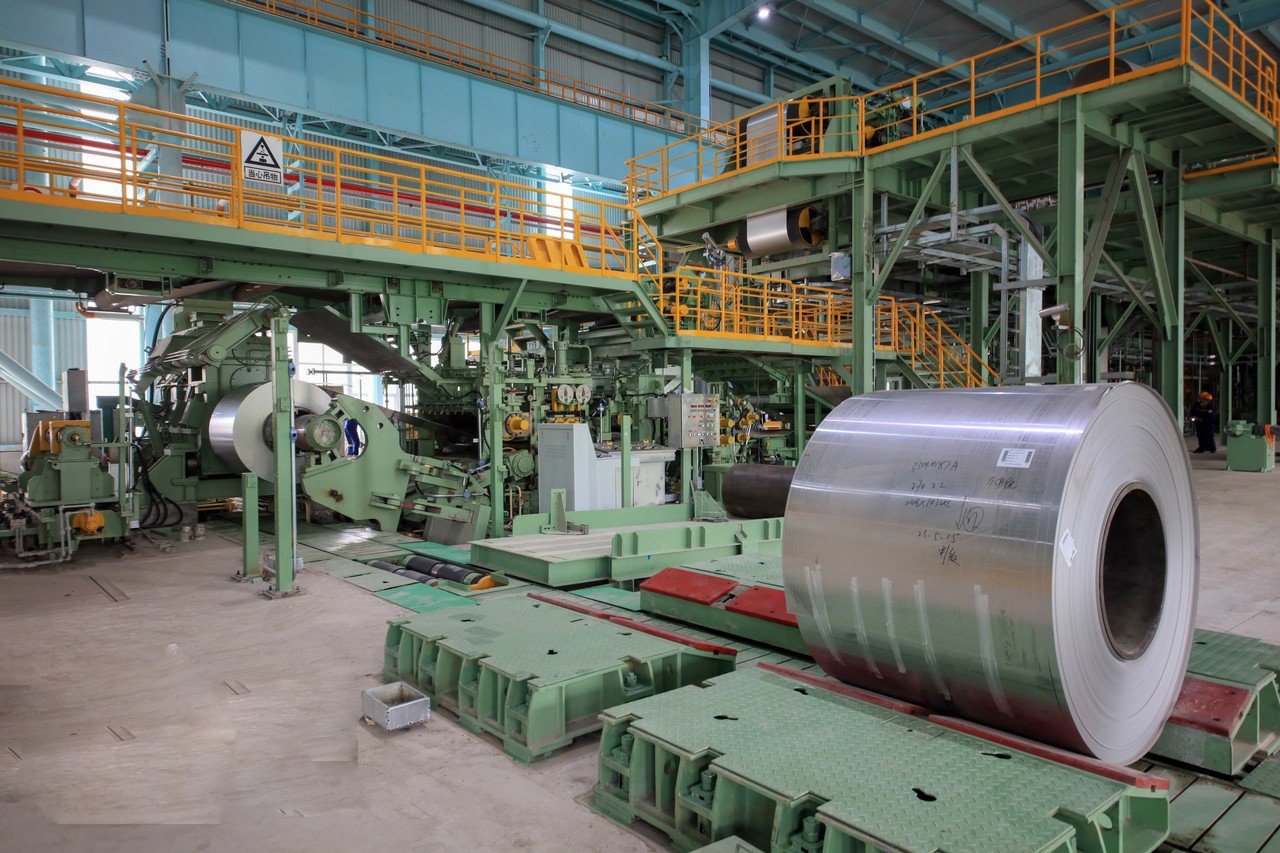
Conducting a Lifecycle Cost Analysis (LCCA)
The most common mistake businesses make is evaluating materials based solely on the initial purchase price. A true measure of effectiveness, however, is the total cost of ownership over the entire service life of the component or structure. A Lifecycle Cost Analysis (LCCA) is a powerful framework that accounts for all associated costs, including initial procurement, installation, energy consumption (if applicable), inspection, maintenance, repairs, and eventual disposal or recycling value. This holistic view provides a far more accurate financial picture.
To perform an LCCA, you must quantify each of these cost categories for different material options. For instance, consider stainless steel versus carbon steel for a pedestrian bridge in a coastal city. The carbon steel bridge will have a lower initial material cost. However, its LCCA must include the cost of a robust initial coating system, regular inspections for corrosion, periodic repainting every 5-10 years, and potential structural repairs due to rust. The stainless steel bridge, while more expensive upfront, would require minimal maintenance beyond occasional cleaning, completely avoiding painting costs and significantly reducing inspection and repair expenses. Over a 50-year lifespan, the stainless steel option almost invariably emerges as the more economical choice.
As a practical example, a client of ours in the chemical processing industry was choosing between 316L stainless steel and a more exotic alloy for a series of storage tanks. While the exotic alloy offered slightly better corrosion resistance on paper, our collaborative LCCA revealed that the projected maintenance savings were negligible and did not justify the 200% increase in initial cost. By opting for our 316L coils and implementing a simple annual inspection protocol, they achieved the required service life and safety standards while freeing up significant capital for other critical investments. This data-driven approach is fundamental to effective evaluation.
Performance Testing and Prototyping
Datasheets provide theoretical performance data, but they cannot fully replicate the unique combination of stresses present in a real-world application. This is where physical performance testing and prototyping become indispensable. Before committing to a large-scale order, it is crucial to test the chosen material under conditions that accurately simulate its intended service environment. This can involve exposing material samples or prototype components to the actual chemicals, temperatures, pressures, and mechanical loads they will face. The insights gained from such tests are invaluable for verifying material suitability and identifying potential failure modes before they become costly problems.
The scope of testing should be comprehensive. For a manufacturer of high-performance heat exchangers, this could mean conducting thermal cycling tests to assess fatigue resistance, as well as corrosion tests using the specific fluids that will run through the system. I worked with an equipment integrator who was developing a new line of food fryers. They prototyped the frying vats using both grade 304 and 316L stainless steel sheets from our inventory. After weeks of testing with various cooking oils at high temperatures, they found that while 304 was adequate, the 316L grade showed significantly less pitting and discoloration, promising a longer service life and easier cleaning for the end-user. This test gave them the confidence to market their product as a premium, heavy-duty unit.
For businesses without in-house testing facilities, partnering with a supplier who can facilitate this is key. At MFY, we often assist clients by providing certified material samples for their testing protocols or by connecting them with specialized laboratories. Investing in this validation step de-risks the procurement process significantly. It replaces assumptions with empirical data, ensuring that the selected material will perform effectively and reliably once deployed, thereby safeguarding the company's investment and reputation. This is the essence of engineering diligence.
Auditing Supplier Quality and Certification
The theoretical effectiveness of a stainless steel grade is meaningless if the material delivered does not actually meet the specified standard. The final and most critical step in the evaluation process is to rigorously vet the quality control systems and documentation of your potential supplier. The cornerstone of this audit is the Material Test Report (MTR), also known as a mill certificate. This document is the material's "birth certificate," providing a detailed chemical analysis and a summary of its mechanical properties as verified by the original manufacturer. You must ensure that every value on the MTR falls within the acceptable range defined by the relevant standard (e.g., ASTM, EN).
However, the evaluation should not stop at the MTR. A truly effective evaluation involves a broader assessment of the supplier's entire quality management system. Does the supplier hold relevant certifications, such as ISO 9001? This certification indicates that they have established and follow internationally recognized processes for ensuring quality and consistency. What are their procedures for traceability? They should be able to track a specific coil or sheet from the original mill all the way to its delivery at your facility, ensuring you know its complete history. This is a non-negotiable requirement for critical applications in industries like aerospace, nuclear, or medical devices.
We encourage our clients to think of us not just as a supplier, but as a quality partner. For a major construction contractor working on a government-funded infrastructure project, we provided a complete documentation package that included not only the MTRs for the stainless steel rebar but also our ISO 9001 certification and detailed traceability records. This level of transparency gave them and the project owners complete confidence in the material's integrity. An effective material is one that is not only specified correctly but is also delivered exactly as specified, with the documentation to prove it.
LCCA includes maintenance costsTrue
Lifecycle Cost Analysis accounts for all long-term expenses including maintenance, not just initial purchase price.
Datasheets replace prototypingFalse
Physical testing under real-world conditions is essential as datasheets can't replicate actual service stresses.
What measures can be taken to optimize the use of stainless steel sheets and coils?
You've successfully sourced high-quality stainless steel, but are you maximizing its value? Inefficient fabrication, suboptimal grade selection, or poor inventory management can erode the material's benefits, leading to unnecessary waste, increased project costs, and missed performance targets. Optimizing its use is the key to unlocking its full potential and gaining a competitive edge.
To optimize the use of stainless steel sheets and coils, businesses should focus on precision in grade and finish selection for the specific application, employ correct fabrication and welding techniques to preserve corrosion resistance, and implement smart inventory and supply chain management strategies.
Optimization is an active process, not a passive one. It requires a conscious effort to refine every step from design to final assembly. I’ve seen this firsthand with a client who manufactures commercial kitchen equipment. Initially, they used grade 304 for all components. After a joint review, we identified that for non-contact decorative panels, a less expensive ferritic grade offered the same aesthetic appeal and sufficient corrosion resistance, saving them 20% on material costs for those parts. This simple act of optimization, multiplied across thousands of units, had a major impact on their profitability. It's about using the right material in the right place, in the right way. We'll now explore the critical measures you can take to ensure every kilogram of stainless steel you purchase delivers maximum value.

Precision in Grade and Finish Selection
The single most impactful optimization measure is ensuring absolute precision in the selection of the stainless steel grade and finish. It is a common and costly mistake to either over-specify or under-specify the material. Over-specification, such as using a high-performance, molybdenum-bearing grade like 316L for a mild indoor application where a 304 or even a 430 would suffice, leads to needless expenditure. Conversely, under-specification is even more dangerous, as using a material that cannot withstand its service environment will inevitably lead to premature failure, warranty claims, and severe damage to a company’s reputation. Optimization lies in finding the perfect balance.
The process begins with a detailed analysis of the application's service environment. This analysis must consider all potential corrosive agents (e.g., chlorides, acids, salts), the operating temperature range, the required mechanical strength, and any aesthetic or hygienic requirements. For example, a client in the food processing industry approached us for guidance on material for a new line of conveyor systems. For the sections carrying dry goods at room temperature, we confirmed that a cost-effective 430 grade with a 2B finish was perfectly adequate. However, for the sections that would be washed down with sanitizing chemicals, we strongly recommended 304L to prevent corrosion from the cleaning agents. This tailored approach optimized both cost and performance across the entire system.
This level of precision requires a deep understanding of material science, or a close partnership with a supplier who possesses that expertise. At MFY, our role often extends into consultancy. We help clients navigate the vast landscape of available grades and finishes, using tools like the PREN (Pitting Resistance Equivalent Number) to quantify a grade's resistance to chloride pitting. By matching the material’s properties precisely to the application's demands, businesses can avoid wasted expenditure and ensure reliable, long-term performance, turning material selection into a strategic advantage.
Optimizing Fabrication and Welding Techniques
Procuring the correct stainless steel grade is only half the battle; its inherent properties, particularly its corrosion resistance, can be compromised during fabrication if improper techniques are used. Welding, cutting, and even handling must be done with care to preserve the integrity of the material's passive layer. Contamination with carbon steel particles, for example, is a common source of premature rusting and must be avoided by using dedicated stainless steel tools and work areas.
Welding is a particularly critical step. The heat generated during the welding process can lead to a phenomenon known as sensitization in austenitic stainless steels. This is where chromium carbides precipitate at the grain boundaries, depleting the surrounding area of the chromium needed to form the protective passive layer and making the weld zone susceptible to intergranular corrosion. To prevent this, fabricators should use low-carbon "L" grades (e.g., 304L, 316L), which have reduced carbon content to minimize carbide formation. Additionally, proper post-weld cleaning, such as pickling and passivation, is essential to remove heat tint (oxide scale) and restore the passive layer over the weld and heat-affected zone.
We worked with a construction client who was experiencing unexpected corrosion near welds on a stainless steel piping system. A site visit revealed they were using carbon steel wire brushes to clean the welds, which embedded iron particles into the surface, creating localized corrosion sites. Furthermore, they were not performing a final passivation step. We advised them on switching to dedicated stainless steel brushes and implementing a proper pickling and passivation procedure using a nitric acid solution. This corrected the issue and optimized the system's longevity. Proper fabrication is not an optional extra; it is a fundamental requirement for realizing the full value of the material.
Implementing Smart Inventory and Supply Chain Management
Optimizing the use of stainless steel extends beyond engineering and fabrication into the realm of supply chain and inventory management. Holding excessive inventory ties up valuable working capital and increases storage costs, while insufficient inventory can lead to production stoppages and missed delivery deadlines. A smart, agile supply chain strategy is crucial for ensuring that the right material is available at the right time, in the right quantity, without unnecessary surplus. This is a core part of MFY’s value proposition.
One effective strategy is to work with a supplier that offers just-in-time (JIT) delivery or has strong inventory and processing capabilities. For a large-scale manufacturer of home appliances, holding massive coils of various grades and sizes is inefficient. Instead, they partner with us. We hold the master coils in our service center, and they place orders for specific quantities of sheets, cut-to-length and slit-to-width, for delivery directly to their production line as needed. This practice dramatically reduces their inventory holding costs, minimizes scrap by providing custom sizes, and ensures a smooth production flow.
Furthermore, leveraging a supplier's market intelligence can lead to significant cost optimization. As a diversified group with a presence in raw material trading, MFY has deep insights into nickel price fluctuations and other market trends that impact stainless steel costs. By sharing this intelligence, we can help our clients make more strategic purchasing decisions. For instance, we might advise a large distributor to increase their stock levels ahead of an anticipated price hike or to delay a major purchase if we foresee a market downturn. This transforms the client-supplier relationship from a simple transaction into a strategic partnership focused on mutual success and cost optimization.
Grade selection impacts cost and performanceTrue
Precisely matching stainless steel grade to application requirements prevents both overspending and premature failure.
All stainless grades require identical fabricationFalse
Different stainless steel grades have unique fabrication requirements, especially regarding welding techniques and post-treatment.
What are the expert recommendations for purchasing stainless steel sheets and coils?
You're ready to make a purchase, but how do you navigate the complex global market to find a supplier you can trust? Choosing a supplier based on the lowest price alone is a risky gamble that can lead to inconsistent quality, unreliable deliveries, and a lack of technical support when you need it most. To secure your supply chain, you must adopt a more strategic approach to procurement.
Expert recommendations for purchasing stainless steel sheets and coils include evaluating suppliers on their total capability beyond just price, meticulously verifying Material Test Reports (MTRs) for compliance, and cultivating a long-term strategic partnership that fosters collaboration, transparency, and shared growth.
In my role as Global Business Director, I've seen countless businesses build their success on the foundation of a strong, reliable supply chain. The key is to view your supplier not as a vendor, but as an extension of your own enterprise. I recall a new client, an equipment integrator, who was previously sourcing from multiple traders with inconsistent results. By consolidating their purchasing with MFY, they not only gained consistent quality but also access to our technical support and logistics expertise. This partnership allowed them to streamline their operations and focus on their core business. The following recommendations are born from these experiences, designed to help you build a similarly resilient and value-driven procurement strategy.
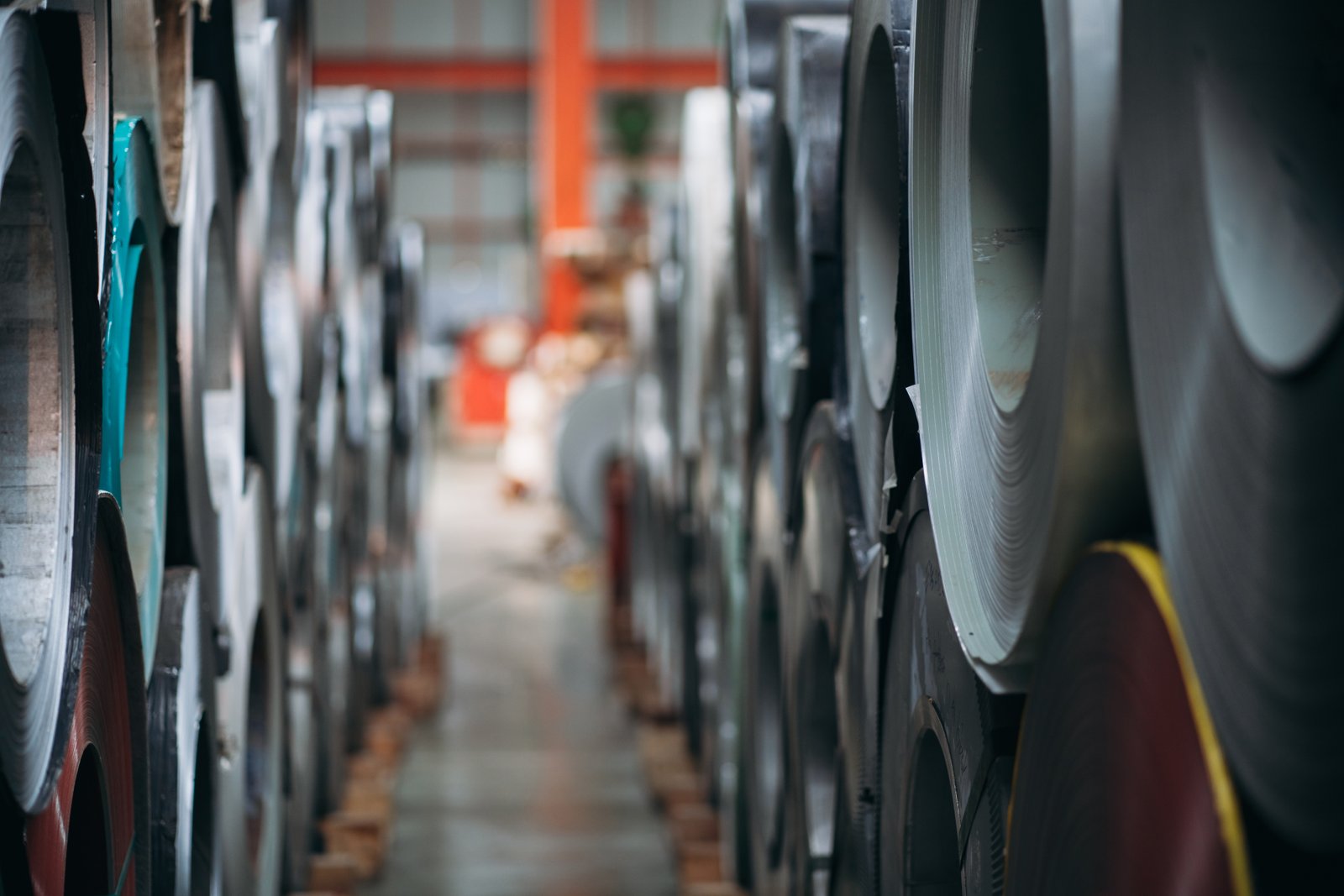
Beyond Price: Evaluating Supplier Capabilities
The most fundamental shift in purchasing strategy is to move beyond a myopic focus on price per ton. While cost is undeniably important, true value is found in a supplier's total capability. A low price from an unreliable supplier can quickly be negated by the high costs of production delays, rejected materials, or product failures. A strategic evaluation should assess a supplier's production capacity, inventory levels, logistics expertise, and technical support. Can the supplier handle your volume requirements? Can they scale up with you as your business grows?
At MFY, our integrated supply chain is our core strength. We are not just traders; we have our own cold-rolling processing facilities and tube manufacturing plants. This gives us direct control over quality and production schedules. For a large distributor client in the Middle East, this is critical. They need a partner who can consistently supply dozens of containers per month across a range of grades and sizes. Our strong production capacity and vast inventory mean we can meet their demand reliably, while our in-house logistics team ensures a rapid and smooth export delivery process. This comprehensive capability provides them with security and peace of mind that a simple trader could never offer.
When evaluating a new supplier, ask for evidence of their capabilities. Request a tour of their facilities, either virtually or in person. Inquire about their inventory management system. Discuss their logistics network and typical lead times to your location. A capable supplier will be transparent and proud to showcase their operational strengths. This holistic evaluation ensures you're choosing a partner who can support your business's stability and growth, not just a vendor offering a temporarily attractive price.
Understanding Material Test Reports (MTRs) and Compliance
The Material Test Report (MTR)9 is the single most important document in any stainless steel transaction. It is your ultimate guarantee of quality and compliance. However, simply receiving an MTR is not enough; you must have the expertise to read, understand, and verify it. The MTR provides the exact chemical composition and mechanical properties (like tensile strength, yield strength, and elongation) of the specific heat lot of steel you are receiving. Your engineering or quality control team must meticulously compare the values on the MTR against the requirements of the relevant international standard (e.g., ASTM A240 for sheet and plate, ASTM A312 for pipe).
Any discrepancy, no matter how small, should be a red flag. For instance, if you ordered grade 316L, the MTR must show a molybdenum content of at least 2.0% and a carbon content of no more than 0.03%. A failure to meet these specific chemical thresholds means the material is not, by definition, 316L and will not perform as expected. A reliable supplier will always provide a clear, legible, and fully compliant MTR for every item they ship. They should also be able to provide full traceability, linking the material back to the original mill and heat number.
This verification process is a non-negotiable part of our own quality protocol at MFY. Before any material enters our export inventory, its MTR is rigorously checked by our technical team. I recall an instance where a client, an engineering contractor for a critical infrastructure project, required an independent third-party inspection of the material and its documentation before shipment. We welcomed and facilitated this inspection. The third-party inspector confirmed that our material and its accompanying MTRs were fully compliant, giving the client the highest level of assurance. Insist on this level of transparency and documentation; it is the bedrock of a secure supply chain.
Building a Strategic Partnership with Your Supplier
Ultimately, the most effective purchasing strategy is to move away from purely transactional relationships and toward building a long-term, strategic partnership with your supplier. A true partner invests in understanding your business, your technical challenges, and your market goals. They function as a consultant, a problem-solver, and a collaborative resource, not just an order-taker. This deeper relationship fosters trust, improves communication, and unlocks significant value over time.
A partnership is a two-way street. It involves open communication about your future needs, product development pipelines, and any challenges you're facing. For example, one of our manufacturing clients in India was developing a new product line and needed to source a specific stainless steel profile that wasn't a standard stock item. Because of our strong partnership, they involved us early in their design phase. We were able to leverage our network and production capabilities to develop a custom solution for them, ensuring they could launch their new product on schedule. This level of collaboration would be impossible in a simple buyer-seller relationship.
Look for a supplier who demonstrates a genuine interest in your success. Do they proactively share market insights? Do they offer technical advice to help you optimize your material usage? Are they flexible and willing to work with you to solve problems? At MFY, our vision is to be the leading international trade and service brand in our industry. We know that we only achieve this when our clients succeed. Therefore, we are committed to building these kinds of enduring partnerships, guided by our values of agility and continuous evolution. Choose a supplier who shares this philosophy, and you will build a supply chain that is not just a cost center, but a powerful competitive advantage.
MTRs verify material complianceTrue
Material Test Reports provide documented proof that the stainless steel meets required chemical and mechanical specifications.
Price is the only supplier factorFalse
Strategic purchasing evaluates multiple supplier capabilities including production capacity, logistics, and technical support - not just price.
Conclusion
Choosing the right stainless steel sheets and coils is a strategic decision that directly impacts product performance, total cost, and operational longevity. By understanding the material's core characteristics, critically evaluating its effectiveness in your applications, and building a partnership with a knowledgeable supplier like MFY, you secure a foundation for success.
-
Understand the enhanced corrosion resistance of 316 in salty and humid conditions ↩
-
Discover the economic impact of global corrosion and prevention strategies ↩
-
Explore the benefits and applications of the 2B finish in industrial scenarios ↩
-
Understand 316L stainless steel's benefits for public health and infrastructure security ↩
-
Learn about stainless steel's architectural significance and durability in historic structures ↩
-
Discover AHSS's role in enhancing vehicle safety and efficiency ↩
-
Learn about duplex stainless steel advantages in corrosion resistance and cost ↩
-
Discover evaluation methods for optimizing stainless steel use in industries ↩
-
Learn to ensure quality through understanding MTRs and compliance standards ↩
Have Questions or Need More Information?
Get in touch with us for personalized assistance and expert advice.



